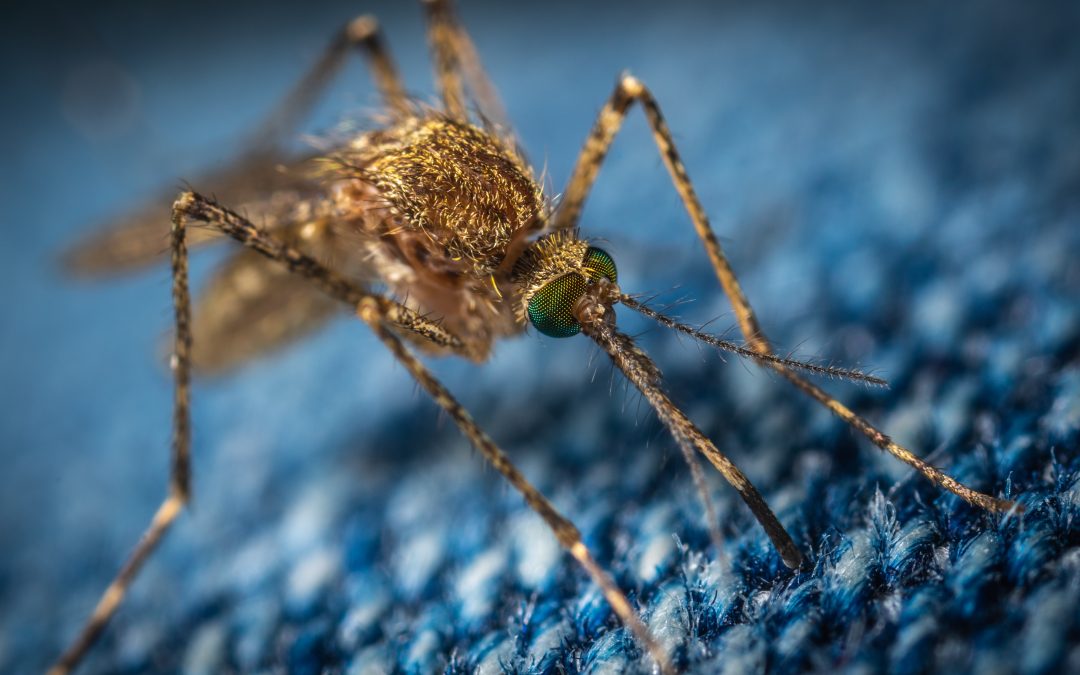Dengue fever is one of the most pressing threats to global health. The World Health Organization considers it the most critical mosquito-borne virus. The symptoms include sudden-onset fever, headache (usually located behind the eyes), muscle and joint pains (thus the moniker “breakbone fever”), and a rash. The virus is spreading rapidly, with infection rates increasing by a factor of thirty over the last fifty years. More than 2.5 billion people in over 100 countries are at risk. While a vaccine for dengue fever was introduced in 2016, it is not 100% effective and researchers are still looking at novel ways to prevent infection.
One of the new approaches to prevent infection involves releasing bacterially-infected mosquitoes into the wild to crash the local population. This approach has been tested before, which we briefly mentioned in our blog about Zika last year. The method uses Wolbachia bacteria to control the population. Wolbachia is one of the most common parasitic microbes on the planet. They infect arthropods, including a high proportion of insects such as mosquitoes.
Wolbachia affects the reproduction process of the insects through a mechanism called “cytoplasmic incompatibility.” This phenomenon can result in males that are incapable of creating viable offspring. When a Wolbachia-infected male mates with an uninfected female, the infected sperm kill the eggs after fertilization. The sterilization effect does not result in the loss of 100% of the eggs, but scientists believe that they can modify the bacteria’s genome to make it more potent. However, when an infected male mates with an infected female, the eggs survive. Cytoplasmic incompatibility makes it so that non-infected females will only have reproductive access to a portion of the male population, compared to infected females which can successfully mate with any male. Since an infected female passes the infection to her offspring, the reproduction advantage of infected females will eventually lead to infected mosquitoes dominating the population.
Researchers at Vanderbilt University have recently pinpointed two genes in the bacteria that are responsible for this effect. Interestingly, the genes are not actually in the bacteria’s DNA, but rather they are in a virus within the bacteria’s chromosome. The researchers transferred these bacterial genes directly into Drosophila that weren’t infected with Wolbachia, and found that these genetically-modified males were unable to reproduce with healthy females. The modified males could reproduce with Wolbachia-infected females, which means that this genetic modification exactly mimics the behavior of infected hosts in nature without requiring the physical presence of Wolbachia.
Researchers at the Yale School of Medicine theorized that the two genes worked like a toxin and antidote. To test this, they inserted only the “toxin” gene into yeast and activated it – which resulted in the death of the yeast cells. However, when the “antidote” gene was also present, the toxin gene had no effect. This effect explains how Wolbachia’s sterilization effect works. The toxin gene is expressed in infected sperm and the antidote gene is expressed in infected eggs. When infected sperm enter uninfected eggs, the eggs are killed. Though when the eggs are infected, the antidote gene protects the eggs and they develop normally, aside from the presence of the parasite.
A goal of all this research would be to take the genes from Wolbachia and insert them directly into the genome of Aedes aegypti mosquitoes – the primary vector of diseases like dengue and Zika. Releasing these modified mosquitoes would allow scientists to effectively crash local mosquito populations in high-risk areas. The approach of modifying the mosquitoes directly could be considered safer than using genetically-modified Wolbachia (with increased potency of the sterilization effect) as the primary way to control the population. This is because modifying the mosquitoes directly doesn’t create the risk of introducing genetically-modified bacteria into the biosphere which could potentially jump to other organisms with unintended consequences.
Powers Scientific has been helping advance insect research like this for over 30 years with our Drosophila and Small Insect Chambers that are great for applications involving mosquito rearing, such as studies on vector biology, vector-parasite interactions, insecticide susceptibility, vaccine studies, etc. Our chambers have a 15-60°C programmable temperature range, making them flexible for a multitude of applications. The Level 3 chambers are controlled by thermoelectric (Peltier) coolers and come equipped with ultrasonic humidity generators capable of providing up to 80% relative humidity. Programmable digital clock-controlled fluorescent lighting (two lamps are provided – LED lighting is available as an option) is also included on the Level 3 models for complete control over lighting conditions in the chamber. Since all our chambers are custom-built, we can also provide additional doors or screening inside the chamber for added security against escaping mosquitoes when opening the chamber door.
For more information, see our Drosophila and Small Insect Chambers product page, visit our Contact Us page, or call us at (800) 998-0500.

